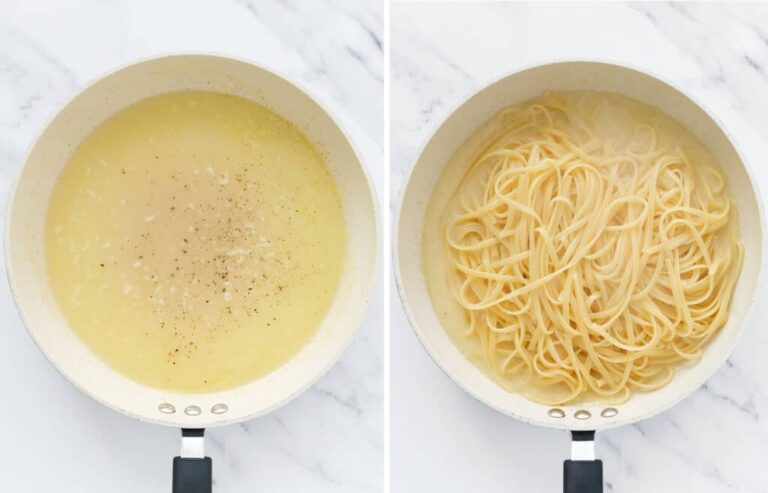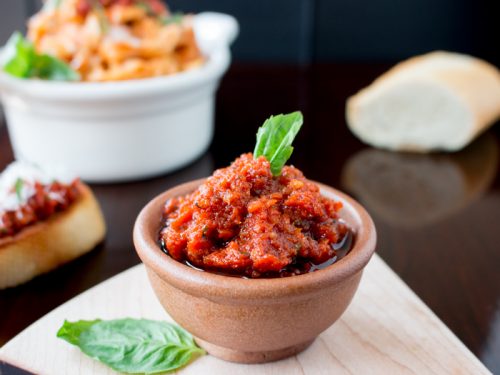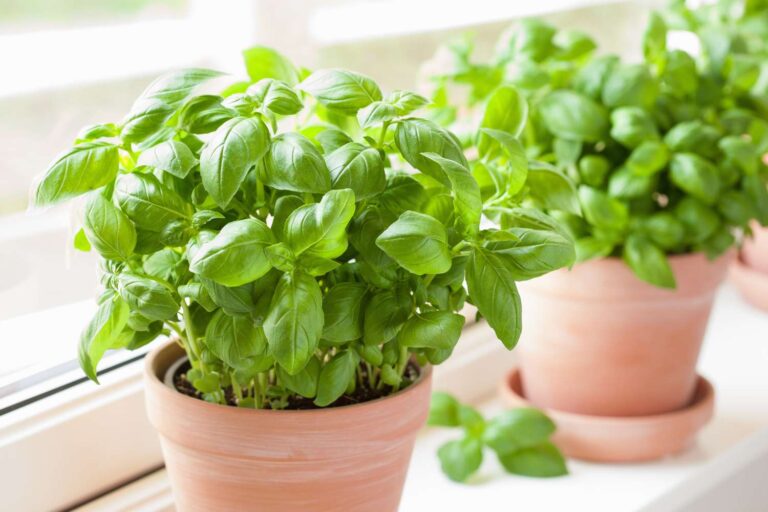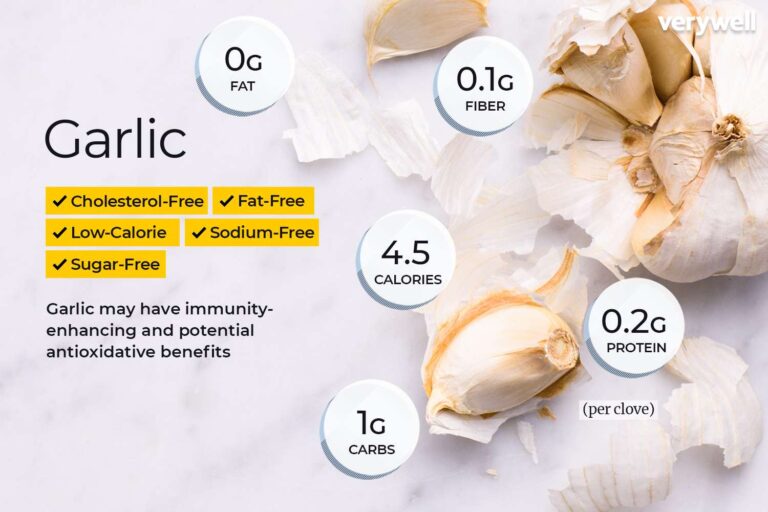Curious about what is Basil Pesto? Well, it’s often known simply as pesto, is a classic Italian sauce originating from the Liguria region. This vibrant green condiment is renowned for its fresh, aromatic flavors derived from its primary ingredient, fresh basil. Typically used as a sauce for pasta, it also enhances a variety of dishes with its rich, herbaceous taste.
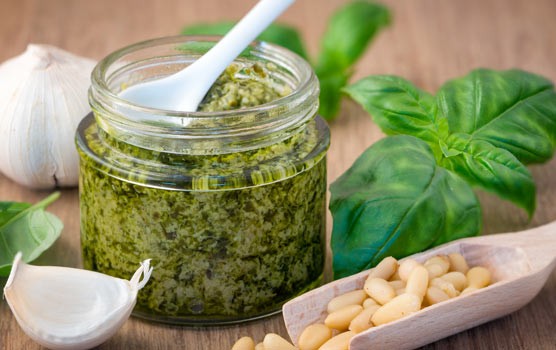
Origins of Basil Pesto
Historical Background
Basil pesto traces its roots back to Genoa, Italy. The name “pesto” comes from the Italian word “pestare,” which means “to pound” or “to crush,” reflecting the traditional method of preparation using a mortar and pestle.
Historical records suggest that pesto’s predecessors date back to Roman times when a similar sauce, moretum, was made using cheese, herbs, and garlic. The modern version of pesto, known as Pesto alla Genovese, became popular in the 19th century and has since become a staple in Italian cuisine.
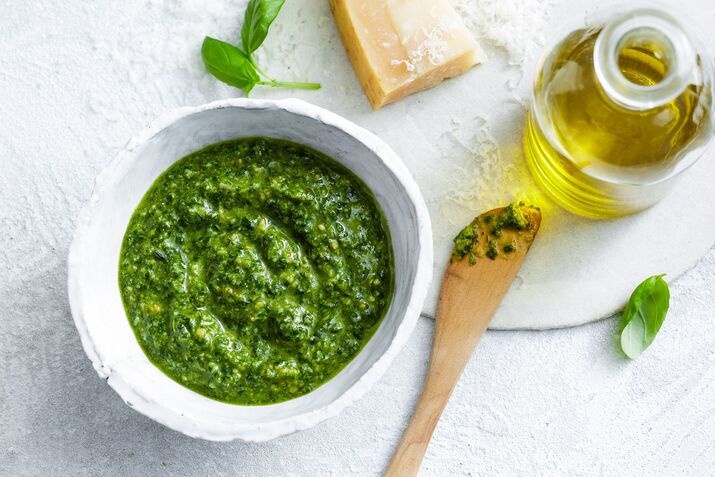
Cultural Significance
In Italian cuisine, basil pesto is more than just a sauce; it’s a culinary tradition passed down through generations. It’s a staple in Ligurian households, symbolizing the region’s rich agricultural heritage and the importance of fresh, local ingredients.
Pesto is celebrated in various festivals and culinary competitions, highlighting its enduring cultural relevance. The Ligurians’ pride in their pesto is evident in the care taken in selecting the finest ingredients, such as Genovese basil, which is considered the best for making pesto.
Key Ingredients
Traditional Ingredients
Basil
The star of the show, basil, specifically the Genovese variety, provides the distinctive aroma and vibrant green color. Fresh basil leaves are crucial as they bring a sweet, peppery flavor that dried herbs cannot replicate. This variety of basil is particularly tender and flavorful, making it the preferred choice for an authentic pesto.

Olive Oil
Extra virgin olive oil is the preferred choice for its robust flavor and smooth texture. It acts as the binding agent, melding the flavors of the other ingredients together while adding a rich, fruity note. High-quality olive oil, often sourced from the Liguria region, enhances the overall taste of the pesto.

Pine Nuts
Pine nuts add a creamy texture and subtle nutty flavor. Some variations use walnuts as a substitute, but pine nuts remain the traditional choice. Toasting the pine nuts can bring out additional flavors, though this is a matter of personal preference.

Garlic
Garlic provides a pungent kick, balancing the sweetness of the basil and the richness of the nuts and cheese. Fresh garlic cloves are typically used to ensure a robust flavor that permeates the sauce.
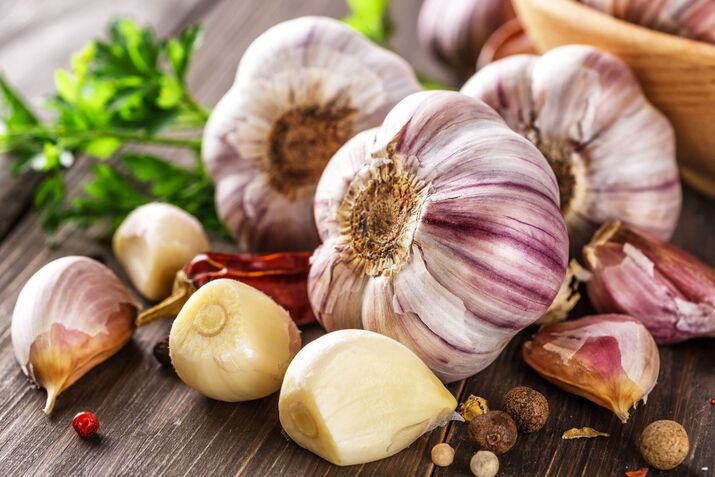
Parmesan Cheese
Freshly grated Parmesan cheese, or Parmigiano-Reggiano, contributes a salty, umami depth to the pesto. Some recipes also include Pecorino Romano for added sharpness. The combination of these cheeses creates a complex flavor profile that is both rich and savory.

Ingredient Variations
Vegan Substitutes
For a vegan version of pesto, Parmesan cheese can be substituted with nutritional yeast, which mimics the cheesy, umami flavor. Additionally, vegan cheese products available in stores can serve as a suitable replacement. This variation allows those who avoid animal products to enjoy the delicious flavors of pesto without compromising on taste.
Nut-Free Options
For those with nut allergies, sunflower seeds, pumpkin seeds, or even chickpeas can be used in place of pine nuts. These alternatives provide a similar creamy texture without the allergenic properties. Sunflower seeds and pumpkin seeds are especially popular as they blend well with the other ingredients and maintain the integrity of the sauce.
Culinary Uses
Popular Dishes
Pasta
The most common use of basil pesto is as a sauce for pasta. Classic combinations include linguine, spaghetti, or trofie pasta tossed with pesto, sometimes garnished with a sprinkle of extra Parmesan and a few toasted pine nuts. The simplicity of pasta with pesto allows the flavors of the fresh ingredients to shine, making it a favorite dish in many households.

Pizza
Pesto also serves as an excellent pizza base, either as a substitute for traditional tomato sauce or drizzled on top of a freshly baked pizza. It pairs exceptionally well with toppings like mozzarella, cherry tomatoes, and grilled vegetables. The vibrant green color of pesto adds a visually appealing element to pizzas, making them as attractive as they are delicious.

Creative Uses
Sandwiches and Wraps
Basil pesto can elevate a simple sandwich or wrap, adding a burst of flavor. Spread it on bread for a delicious chicken or veggie sandwich, or use it as a spread in wraps to enhance the taste. Combining pesto with other ingredients like grilled chicken, fresh tomatoes, and mozzarella creates a gourmet sandwich that’s perfect for a quick and satisfying meal.

Dips and Spreads
Mixing basil pesto into cream cheese, Greek yogurt, or even mayonnaise creates a flavorful dip or spread perfect for vegetables, crackers, or as a sandwich spread. This versatility makes it a great addition to any appetizer platter. Pesto-infused dips can be served at parties or as part of a casual snack, offering a unique twist on traditional spreads.
Additional Culinary Applications
Salad Dressing
Thin basil pesto with a bit of olive oil or vinegar to create a unique salad dressing. This pesto dressing can add a fresh, vibrant flavor to various salads, particularly those featuring tomatoes, mozzarella, and other Mediterranean ingredients.
Marinades
Pesto can be used as a marinade for meats and vegetables. Marinating chicken, fish, or shrimp in pesto before grilling infuses the food with its aromatic flavors. Similarly, tossing vegetables in pesto before roasting brings out their natural sweetness while adding a savory note.
Baking
Incorporate pesto into baked goods like bread or savory pastries. Swirling pesto into bread dough before baking results in a beautifully marbled loaf that’s perfect for sandwiches or as a side dish.
For a deeper understanding of pesto, take a look at our all-encompassing article on making and using pesto.
Storing and Preserving Pesto
Refrigeration
Basil pesto can be stored in an airtight container in the refrigerator for up to a week. To prevent oxidation and maintain its vibrant green color, drizzle a thin layer of olive oil on top before sealing. This method helps to keep the pesto fresh and flavorful.
Freezing
For longer storage, freeze pesto in ice cube trays and transfer the frozen cubes to a freezer-safe bag. This allows you to use small portions as needed, preserving the pesto’s freshness for up to six months. Thawing pesto is easy; simply leave it at room temperature or in the refrigerator until it’s ready to use.
FAQs
Conclusion
Basil pesto is a versatile and flavorful sauce that has earned its place in kitchens worldwide. Whether used in traditional dishes like pasta and pizza or in creative new ways, its fresh, aromatic taste is sure to enhance any meal.
Understanding its key ingredients and various applications allows you to experiment and enjoy this classic Italian condiment in numerous delicious ways. From sandwiches to dips, marinades to dressings, the possibilities with basil pesto are endless, making it a must-have in any culinary repertoire.
Disclosure: Our blog contains affiliate links to products. We may receive a commission for purchases made through these links. However, this does not impact our reviews and comparisons. We try our best to keep things fair and balanced, in order to help you make the best choice for you.


